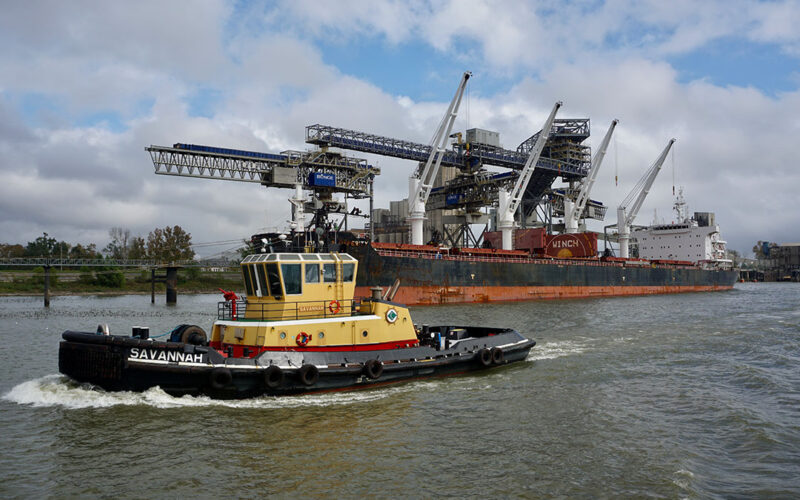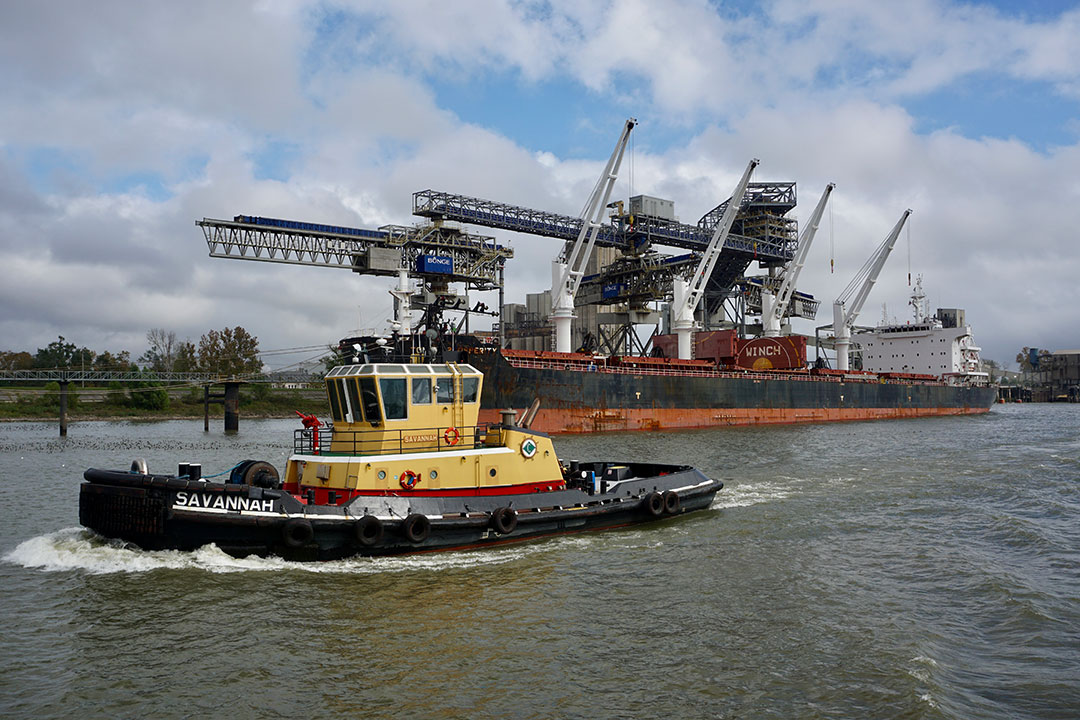
Crescent Towing Capt. Danny Hudson looked at the AIS screen aboard the tugboat Savannah and then glanced down the Lower Mississippi River. He predicted the inbound bulk carrier would round the bend near St. Rose, La., any second.
Right on cue, the 623-foot Liberia-flagged, Aye Evolution appeared over the horizon. Riding high with ballast water, the ship towered above the barges and other vessels that dotted the riverbank.
Hudson came alongside the hulking ship at 7 knots. Looking aft, the Crescent tugboat Ned Ferry stood by awaiting orders from the New Orleans Baton Rouge Steamship Pilots Association (NOBRA) pilot conning the bulker.
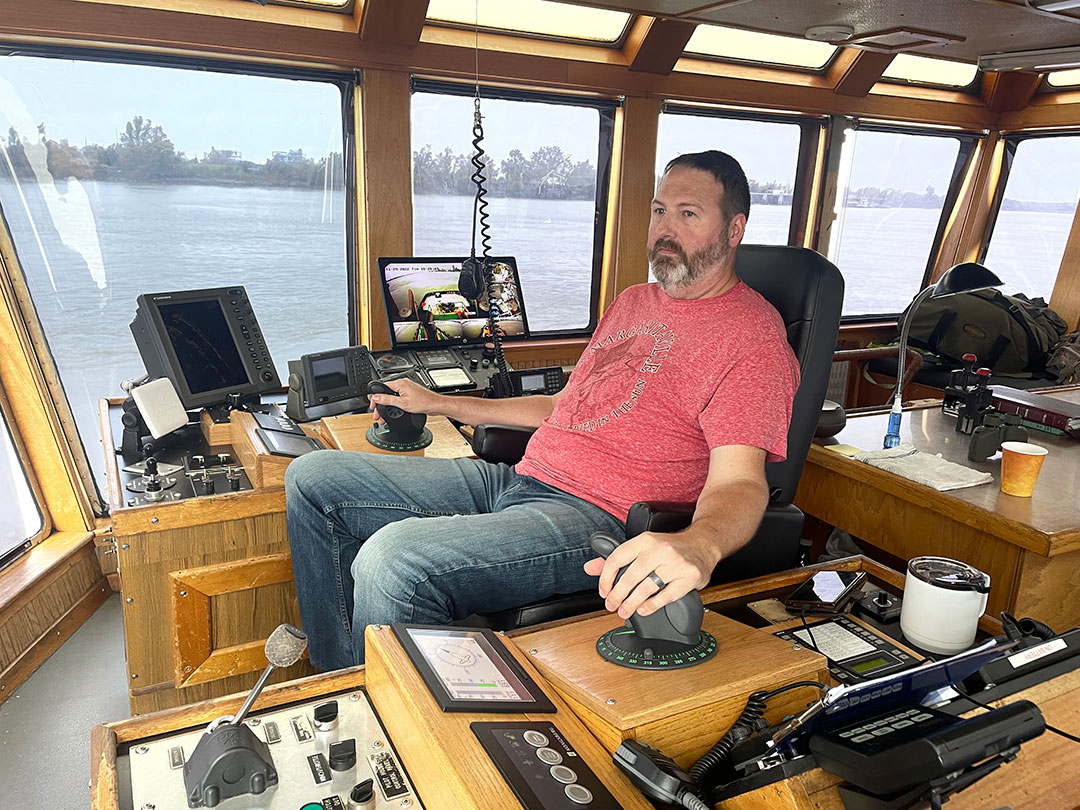
“He will use us to slow down and then just kind of guide him into the dock, so he has a soft landing,” Hudson explained on a cloudy late November morning. “And then, the linemen will start getting the lines out.”
The job itself was straightforward, and one that Crescent’s crews have completed countless times during harvest time in the Heartland. They needed to get the ship into berth at the nearby AMD/Growmark elevator at mile marker 120.6, where it would take on thousands of tons of American-grown grain.
Savannah got underway earlier that morning from a Crescent Towing barge at mile marker 119. The job docking Aye Evolution was the second of two back-to-back assignments at ADM’s Destrehan elevator. An hour or so earlier, Savannah and the 98-foot Ned Ferry pulled the loaded 734-foot bulker LT Ocean Star off the dock.
For that job, Hudson used every inch of power from the tug’s twin Caterpillar 3516B engines and Rolls-Royce/Kongsberg z-drives to spin the ship 180 degrees. Following orders from the NOBRA pilot on the bridge, Hudson backed at full power for nearly five minutes to get the loaded ship off the dock and positioned for downbound transit.
Although these towing evolutions are common enough on the Lower Mississippi, the river conditions were unusual. The river was running at historic lows for weeks in fall 2022 due in large part to a drought in the central U.S.
These record low conditions drew onlookers to see sunken vessels re-emerge or walk the sandy river bottom to islands previously accessible only by boat. But low water also wrought havoc on the inland towing industry; barge lines ran with smaller tows to safely navigate challenging conditions and groundings were happening almost daily in some spots.
Low water was less of an issue south of Baton Rouge, where the river is naturally deeper, and dredging keeps the channel depths at 50 feet. But the effects of months of dry weather were still felt downriver.
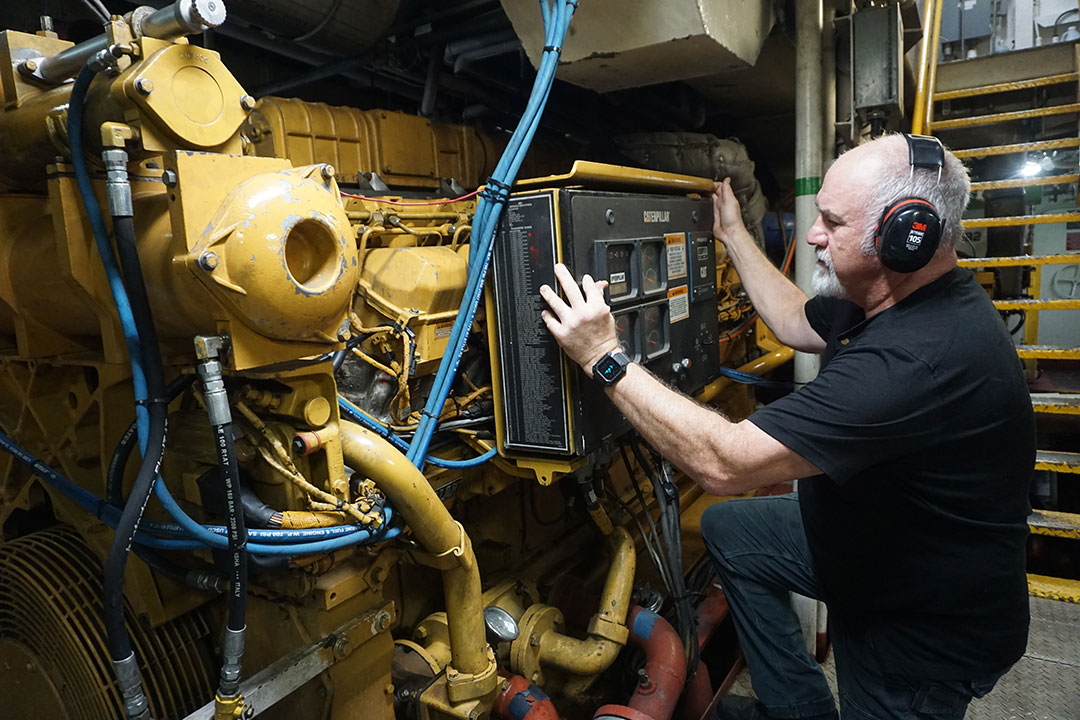
Ben Morvant, senior operations manager for Crescent Towing, said low water tends to create inefficiencies within the system. Barges get held up upriver from the export terminals, which in turn slows down the pace of exports. Bulkers looking to load and get underway for one foreign port-of-call or another find themselves spending more time at anchorage, or leaving with their cargo holds less than full.
The tenor of the towing work can change, too. “With low river, we have our own challenges,” Hudson said. “When we have fronts coming through and the wind starts blowing, there is no current to hold ships in the anchorages. So, they end up in the middle of the channel and we have to go and reposition them.”
Other times, the wind will cause the ships to spin, sometimes twisting around their anchor chains. That, too, will require tugboat assistance to straighten them out, Savannah mate Mark Usey adding, “It’s less stressful when the water is slow because you have more time to react to things. At a higher river stage, things tend to move a lot quicker, so you have less time to react if something goes awry.”
After turning the Panama-flagged LT Ocean Star, Savannah idled in the river for about 30 minutes waiting for Aye Evolution to arrive from an anchorage downriver. Hudson met the ship on its port bow while deck Gould received the messenger line from Aye Evolution’s crew some 50 feet above him.
Savannah ran alongside the bulker with its line out for a couple minutes as it approached the ADM grain terminal. Hudson expected an order from the pilot to begin slowing the ship any minute. The radio call came literally seconds later.
“You all stop up there, Savannah?” the NOBRA pilot asked.
“Riding with you,” Hudson responded.
“You can go all stop,” the pilot said, before Hudson confirmed the order.
Based in New Orleans, Crescent Towing also maintains operations in Mobile, Ala., and Savannah, Ga. The company’s 24-boat fleet features nine z-drive tugs, including Mardi Gras, South Carolina and Arkansas, all built since 2015.
Crescent is a subsidiary of The Cooper Group based in Mobile. Its sister companies include barge, fleet, and towboat services as well as stevedoring, logistics, and forestry businesses. Blakeley Boatworks, the company’s Mobile shipyard, has nearly completed construction of Angus R. Cooper II, another z-drive tug that Crescent will base in Savannah.
Upon delivery this summer, Angus R. Cooper II will be Crescent’s first-ever Tier 4 tugboat and its second full FiFi-class vessel. Propulsion will come from 3,004-hp Caterpillar 3516E engines driving Kongsberg z-drives.
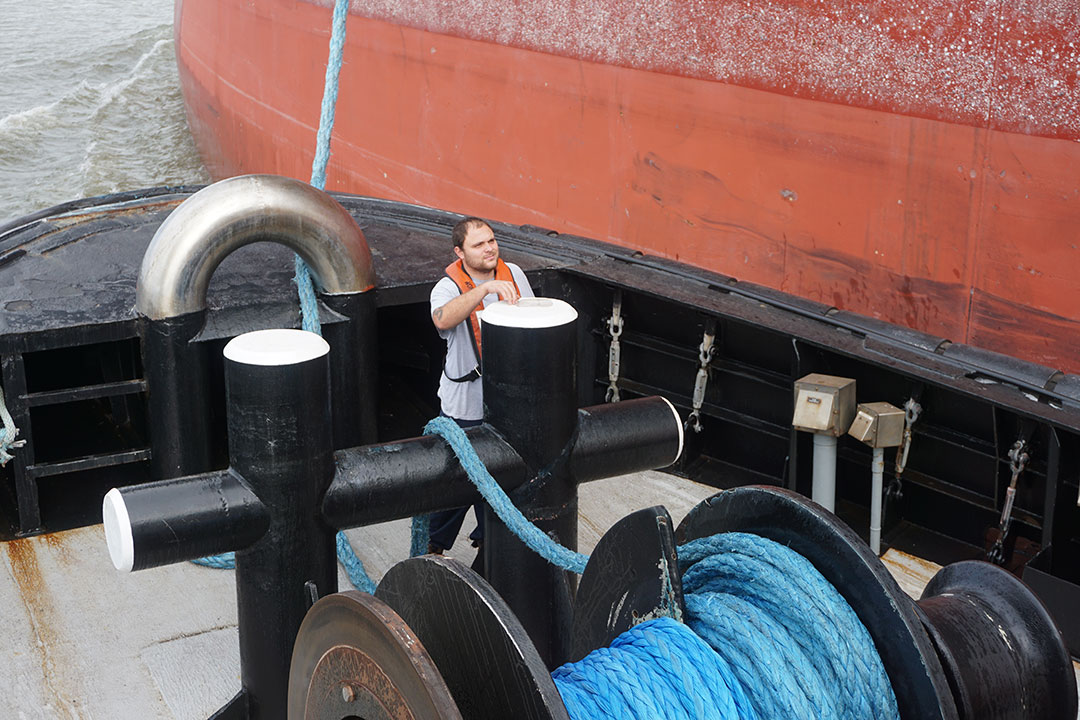
Savannah operates with a four-person crew consisting of a captain, mate, engineer, and deck hand, all of whom work a week-on, week-off schedule. Like many towing companies, seniority will dictate where a crewmember works and whether they stay on a single boat or are reassigned from boat to boat as needed.
Hudson’s journey into the maritime career took a roundabout path. He studied aviation in college with the goal of becoming an airline pilot. That goal shifted to aviation management, but after graduating jobs were hard to come by.
A friend who worked as an engineer for Crescent Towing suggested he come to work for them. That was 18 years ago. Hudson started on deck and worked his way into the captain’s chair. “Once I got on out here, getting into the captain’s position was my goal. It fit right into the mentality of being a pilot. It’s just a different vessel,” he said.
“I wonder if you flew a plane like you drive a tugboat,” Usey interjected.
Usey followed in his father’s footsteps into the maritime industry, and the two worked together on deck many times. His father was a career deckhand for Crescent at a time when there was less upward mobility. These days, he said, it is common for crews to start on deck and work their way up the ladder to the wheelhouse.
“The company has made it so easy to progress it is foolish to stay a career deckhand when you can work toward a captain’s license or an engineer’s license,” Usey said. “Crescent Towing does an awesome job of promoting from within. I would say 99 percent of our upper tier people started on deck.”
Engineer Kevin Anderson served all over the world with the U.S. Coast Guard before joining Crescent almost nine years ago. His job, as he sees it, is clear – keep the systems onboard working optimally and keep the vessel running safely.
“I have been very pleased with the emphasis on safety,” he said of Crescent’s company culture.
Back on the bridge, Savannah and Ned Ferry captain Randy Donahue had begun the docking evolution. They slowly guided the massive ship into the terminal and then inched it into position. Hudson idled against the ship to hold it in position while the linesmen secured its lines to the dock.
Loading time varies on a bulker the size of the Aye Evolution, but it usually takes 24 hours or more. In the meantime, there were plenty of other towing jobs to keep Crescent’s towing crews busy on the Lower Mississippi. •

